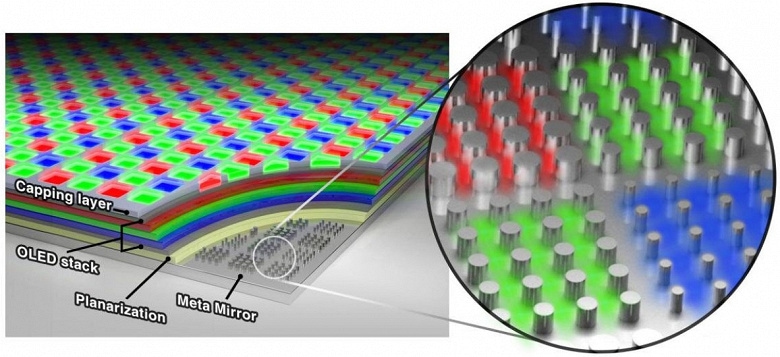
Not long ago we wrote you the first impressions of Forbes on Sony’s new QD-OLED, the A95K. And yes, both this famous medium like the following impressions reviewed by Digital Trends They agreed on the same thing: it is the best image quality they have ever seen, especially in HDR. It’s not just that it has all the strengths of LG’s OLED technology (perfect blacks) but also irons out its flaws: less reflections, more brightness, less ABL, and longer lifespan.
Today, we will try to break down all this new information for you, thanks to various publications from specialized media as well as several tests made on the Dell AW3423DW monitorwhich also uses the same QD-OLED technology that mounts Sony’s Smart TV.
Leaked more facts about the A95K, Sony’s QD-OLED: more brightness, better anti-reflection filter and longer lifespan
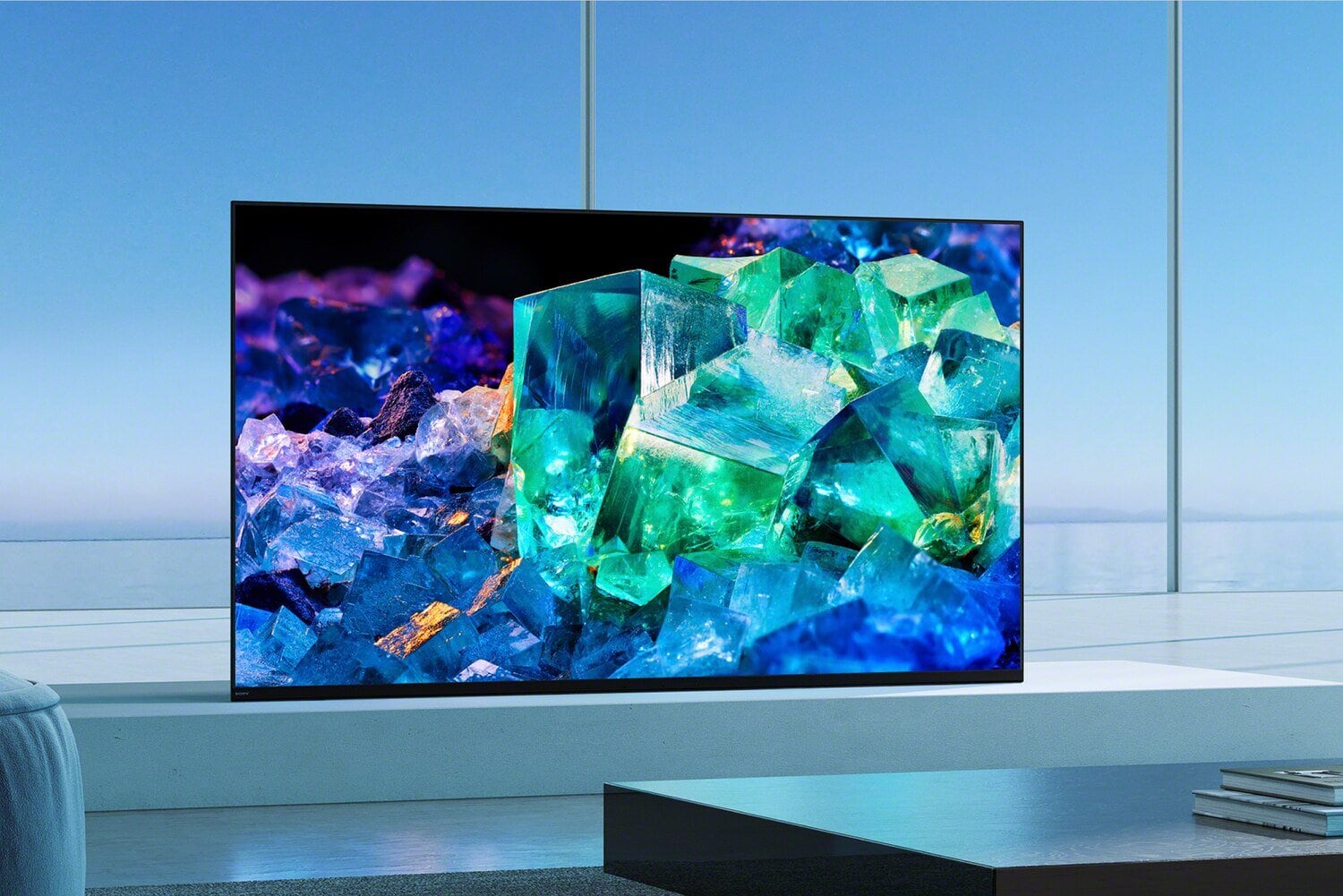
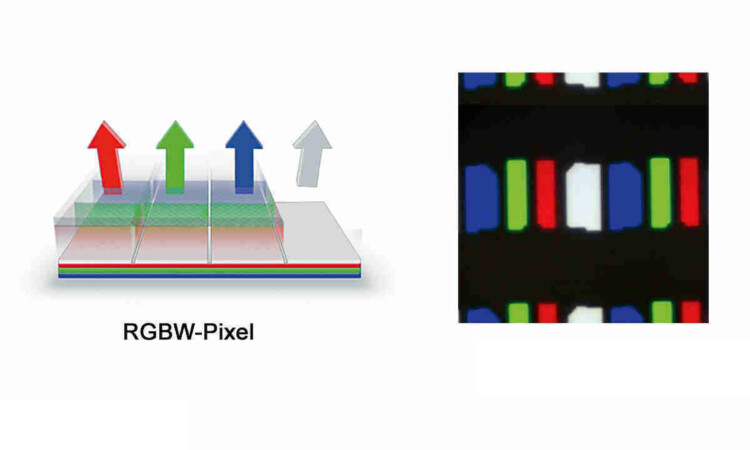
So far we more or less knew this story already, right? all this translates, for the user, into many advantages: more brightness (we will expand later below), better colors in HDR (as they are not “washed” by the white sub-pixel), longer useful life -later we will see why-, less retention and much better treatment in dark scenes and with compression, as there is no white sub-pixel We will no longer have the problems derived from this in the almost black scenes.
QD-OLED: finally a high-end anti-reflection filter
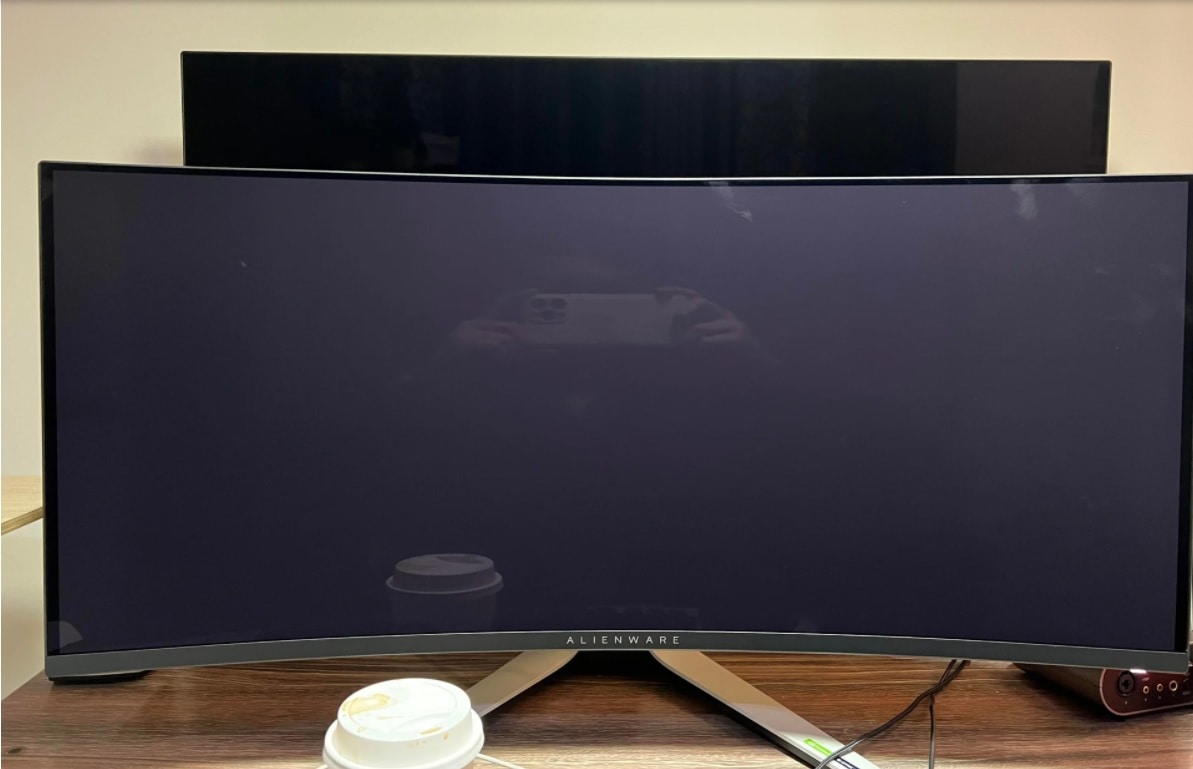
It has nothing to do with that, in fact we leave you below a photo with the lights off so you can see for yourself that black is still pure black. That perception of gray when there is light is given by the anti-glare filter used by Samsung in its new QD-OLEDs. A light polarizing filter very similar to the one used by Panasonic in its veteran plasmas.
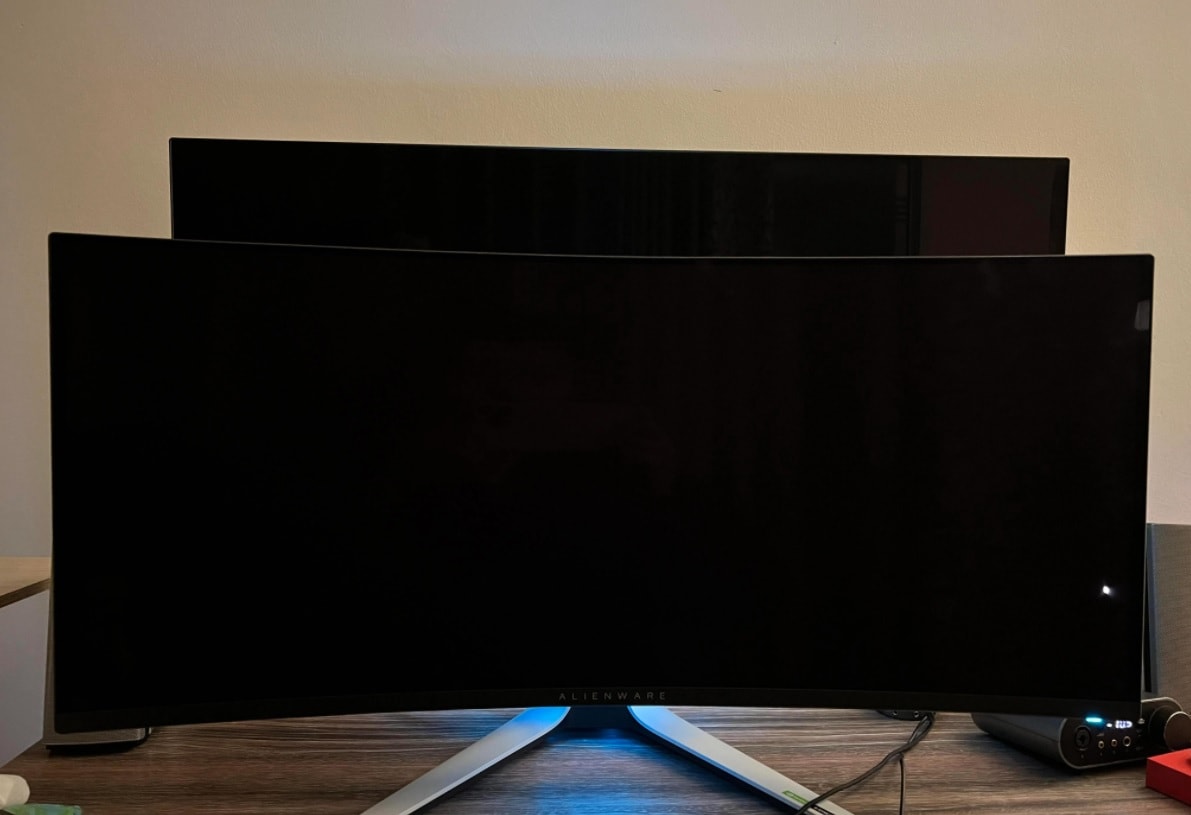
This filter is capable of polarizing light and thus prevents us from seeing the large reflections that are seen in LG’s OLED technology. Samsung can afford to put it in since it has enough brightness when outputting from “front” while LG can’t put it in their TVs as they are already going through an RGB filter to generate the color and it would be wasting too much brightness to add a second to it for the reflexes.
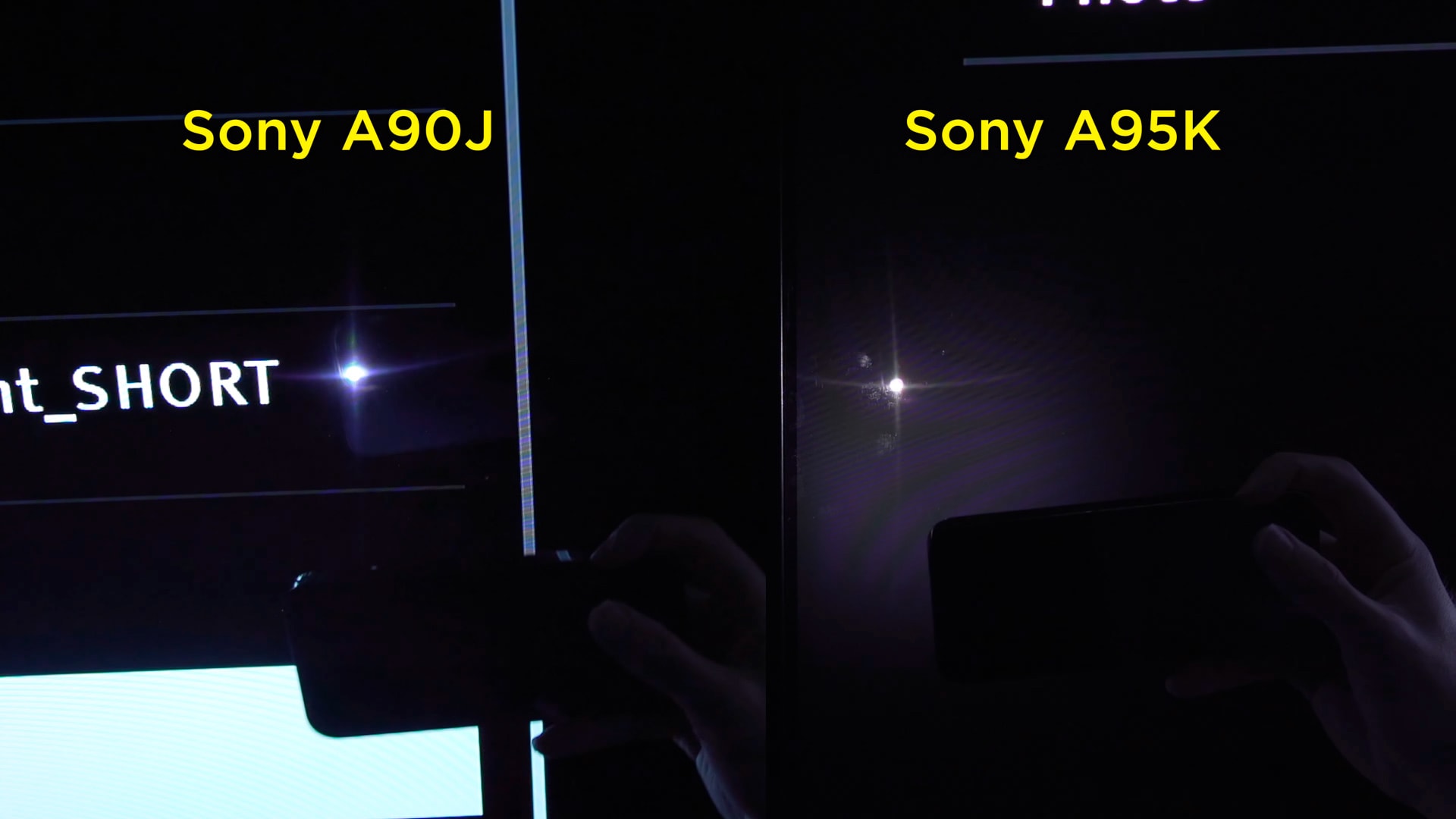
QD-OLED: higher brightness, although not as much as it could
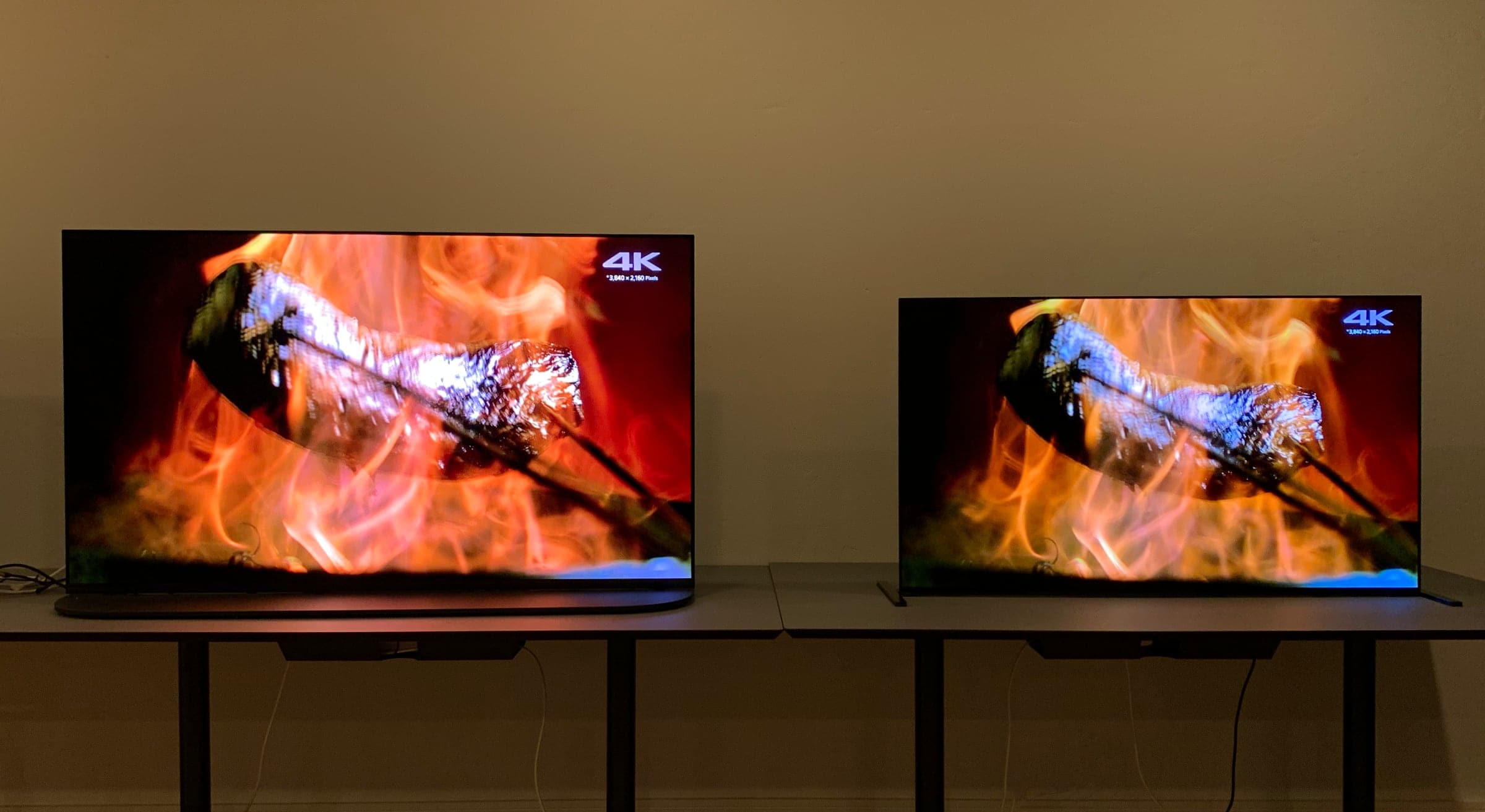
Another hot topic is the subject of brightness, measured in nits. We were all surprised at CES to see how there was talk of figures of up to 1500 nits in the new A95K…but does it really reach that much brightness in the most suitable modes for watching movies? well, we already have official data measured with a professional probe.
According to two means (Digital Trends and an independent user who has already been able to make measurements), the measurements in HDR coincide, so it is likely that they will finally be like that. Depending on the percentage of the total screen, the brightness changes (something normal in HDR, since it usually only uses all the brightness in very small percentages of the screen for specular highlights). Measurements taken in Cinema mode, with color temperature set to 6500K and all image filters off:
- 1% window: 1000 nits
- 2% window: 1000 nits
- 5% window: 1000 nits
- 10% window: 1000 nits
- 100% window: 200 nits
It’s a noticeable improvement over LG’s WRGBs, though keep in mind that brightness measurements aren’t linear. It takes between 4 and 5 times more brightness (nits) to perceive twice the brightness of the image. Remember that in HDR not only the brightness matters, but also the amount of color (Red, Green and Blue, or RGB) that said light is capable of showing.
That’s where the A95K takes a lot of advantage over LG’s OLED technology, achieving a much higher color ratio (between 2 and 3 times more). In addition, our eye will always perceive the most saturated colors as brighter, known as the effect Helmholtz–Kohlrausch. In any case, it seems as if they have reserved some extra brightness that the panel could give for a second version in 2023 (or due to unknown problems, being a completely new technology).
 QD-OLED: the secret to longevity is in the sub-pixels
QD-OLED: the secret to longevity is in the sub-pixels
when does a year and something we talked about a new technology called QD-OLEDwe have already summarized almost all of its advantages that all analysts have seen (and we will be able to see for ourselves in 15 days), but one question always remained in the air: how is it possible that the useful life of the panel lasts long enough? If precisely the problem with OLED RGB technology is that the life of the blue sub-pixel is very short?
Samsung has solved it in several ways, adding all these improvements, the useful life of the panel can easily exceed 150 thousand hours, even exceeding what its direct competition, LG, proposes. But how have they achieved it? as we say, adding a whole series of improvements:
- The efficiency of the pure blue sub-pixel has already increased markedly up to 40 thousand hours natively, thanks to a new manufacturing process developed by DuPont.
- Samsung uses a triple layer stacked process. This means that each pixel of the panel (8 million 300 thousand in a 4K panel), will not only be composed of one blue diode, but three, stacked in a single layer. In this way, the useful life would already increase to 100-120 thousand hours. It is something very similar to what Samsung does with its AMOLED or the double stack process for the panels of the new Apple iPad.
- When making a pure front light emission (and not rear mixing with the white sub-pixel, as it happens with LG), the sub-pixels do not work as much to the limit -perhaps that is why in the A95K it is limited to 1000 nits-, so its degradation it would be less.
- Samsung’s anti-retention system is in real time: it compensates the voltage of each zone of the panel (we don’t know how many it will have) as one zone wears out more than another, instead of the classic LG cycles of 15 minutes every 4 hours, of so that the panel and the pixels are more stable and do not suffer as much degradation as when performing a classic compensation cycle.
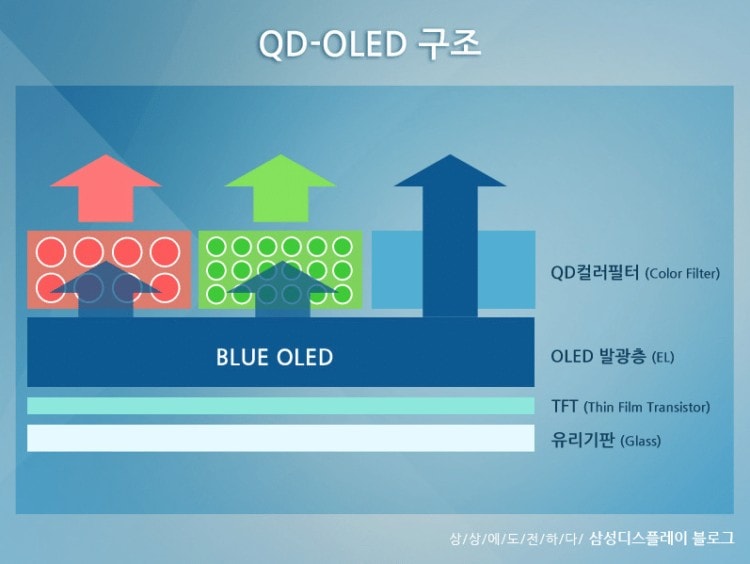
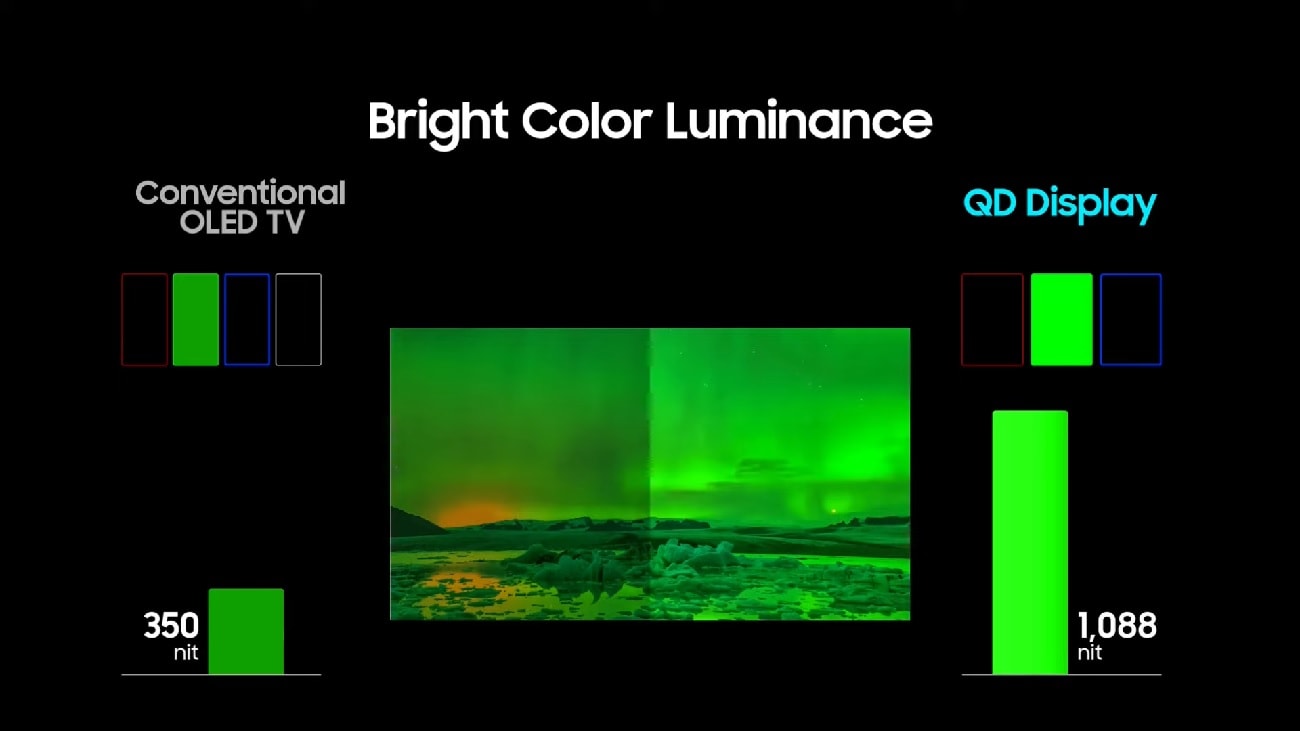 QD-OLED: the secret to longevity is in the sub-pixels
QD-OLED: the secret to longevity is in the sub-pixels